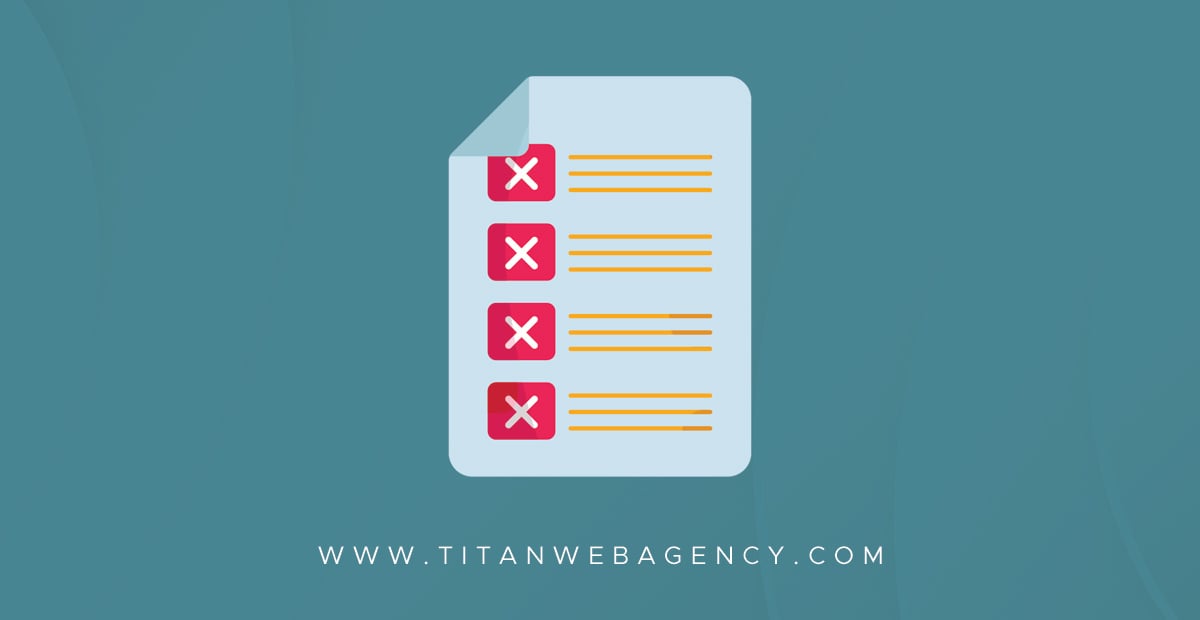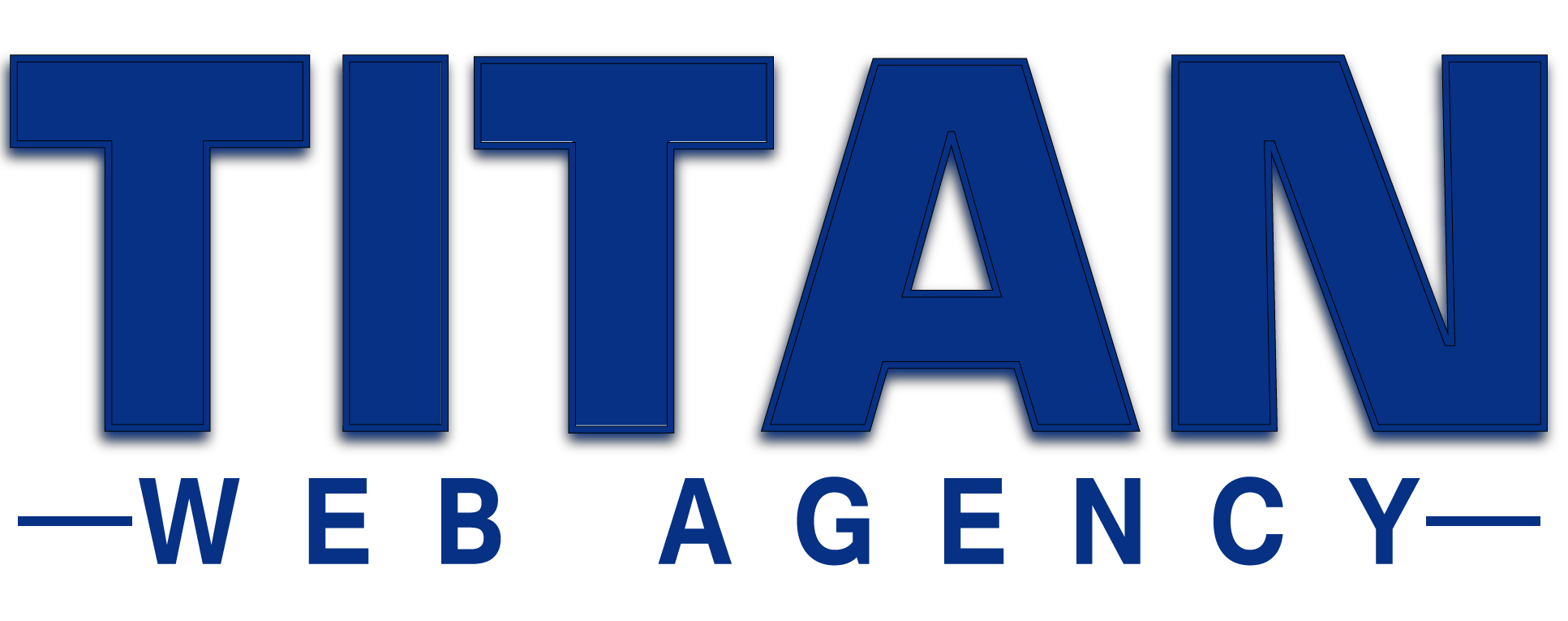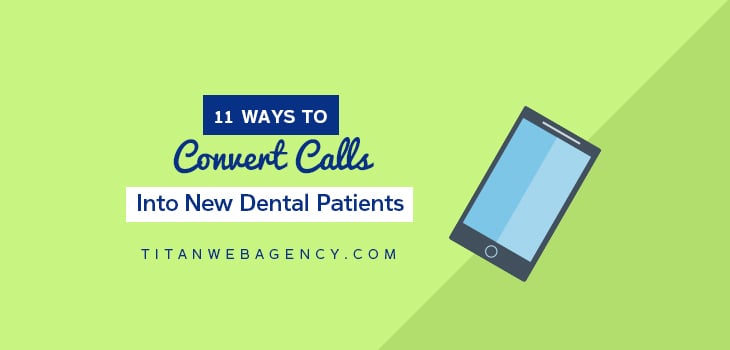11 Ways to Dramatically Reduce Dental Patient Cancellations and No-Shows

What is the best approach to handling patient cancellations?
In any dental practice, patient cancellations and no-shows reduce profits and can impede efforts to grow a practice and attract new patients. While it’s impossible to eliminate all cancellations, it’s essential to put practices in place to reduce them and minimize no-shows.
No-shows are even more disruptive than cancellations because there is no warning and thus, no way to fill the appointment ahead of time.
At Titan Web Agency, we work with dental practices every day to help them attract new patients, retain existing ones, and increase their profits. To help dental practices minimize cancellations and no-shows, we’ve written this guide with 11 best practices and pointers on how to manage patient cancellations.
11 Best Practices to Reduce Patient No-Show Appointments
There are things you and your office staff can do every day to minimize patient no-shows and cancellations. Here are 11 best practices, some of which you may already be doing.
1. Build a Strong Relationship with Your Patients
Patient relationships are at the heart of every dental practice. When patients feel welcome and valued, they are less likely to skip an appointment or cancel one without rescheduling.
You can build strong relationships by creating a welcoming environment in your practice. That might mean spending some money updating your waiting area, training staff on how to greet patients on the phone and in person, or even creating a program where you send birthday greetings to patients.
It may also be helpful to instruct your entire staff on the importance of friendliness and compassion. A nervous patient can be put at ease with friendly conversation and may be more likely to make and keep future appointments than one with who your staff doesn’t engage.
2. Use Multiple (Automated) Appointment Reminder Systems
Patient no-shows and cancellations can happen for the simplest of reasons: because patients forget they have an appointment. Since regular cleaning appointments are typically made six months in advance, it’s not surprising that patients might lose track of the date and time they’ve scheduled.
The best way to combat this type of no-show is by setting up an automated system to send appointment reminders. You may want to start several weeks before the appointment with a postcard appointment reminder being sent. As the appointment time gets closer, follow that with an email and text message that allows the patient to confirm their appointment or reschedule if necessary.
From there, you can send additional reminders via email or text message and augment automated follow-ups with a phone call as the appointment date approaches.
3. Reinforce Why Treatment is Needed or Urgent
When a patient needs dental care beyond routine cleaning, you can reduce the risk of cancellation by ensuring that the patient knows why the treatment is necessary or urgent. Giving the patient information can solidify why the treatment is needed and reduce the risk of cancellation.
For example, talk to a patient who needs a root canal and explain the potential consequences of delaying treatment, including that the issue is likely to worsen over time. Even a patient who is reluctant to get treatment may be convinced if they understand that they’ll experience future pain and discomfort if they don’t proceed.
4. Consider Offering Same-Day Dentistry
A patient who is nervous or reluctant to get treatment may be convinced to proceed if they can be treated when they are already in your office. This technique minimizes future cancellations and can help you fill empty spots in your schedule at the same time.
You may need to spend extra time with a patient explaining how long a procedure will take and ensuring that they understand the risks of delaying treatment. In many cases, a patient will take the opportunity to complete treatment, and you won’t need to worry about a cancellation or no-show.
5. Offer Pre-Payment Solutions
It’s easy for patients to cancel or no-show when they haven’t paid in advance for treatment. While pre-payment might not be an option in every situation, in some cases, it can incentivize patients to keep their scheduled appointments.
One possibility is to create a dental membership plan where patients pay a monthly fee in return for specified services. When a patient has already invested money in their dental health, they’re less likely to no-show and more likely to prioritize their appointments.
6. Let Your Patients Complete Forms Online
Completing forms in the office can be time-consuming and frustrating and for first-time patients, the need to arrive early can be a deterrent to keeping an appointment. You can respect patients’ time and reduce wait times in general by allowing patients to complete intake forms online.
Choosing dental practice management software with a robust patient portal can help you implement this best practice. You can even put tablets in your waiting room to allow patients who don’t complete forms ahead of time to do so quickly when they arrive for their appointments.
7. Reduce Patient Waiting Times
As most dental practices aren’t open at night or on weekends, many patients need to take time from work or school to see you. If you keep them waiting for longer than anticipated, they’re likely to become frustrated and may cancel or avoid any future appointments.
Reducing wait times requires a concerted effort on the part of everyone on your staff. You should strive to start appointments on time and communicate—in advance, if possible—if there will be any delay.
8. Reschedule No-Show Appointments Right Away
What do you do when a patient fails to show up for an appointment? The best option is to reach out to them immediately with a phone call, email, or text, and allow them to reschedule the appointment.
In such cases, you may want your staff to emphasize the urgency of treatment without making the patient feel judged. A welcoming and understanding attitude will increase the chances that a patient will reschedule and come to their next appointment.
9. Provide Transportation Options
The ability to get to a scheduled appointment may be something many of us take for granted. Some patients have difficulty finding transportation to medical and dental appointments, particularly older patients or those who have low incomes.
Dental practices can combat this issue by partnering with ride-sharing services such as Uber and Lyft. Both companies offer transportation programs to increase access to healthcare. Having a process in place to help patients get affordable transportation can go a long way toward eliminating transportation as a reason for cancellations and no-shows.
10. Expand Your Business Hours
Making appointments during the workday might be easy for some patients but not for others. Scheduling on a workday can make it challenging to keep an appointment, requiring them to take time off the clock or get permission from their employers.
Adding some additional office hours combats this issue. For example, you could open at 7 AM on weekdays to allow for before-work appointments or choose one or two nights a week to stay open until 7 PM. You might also consider opening on one weekend day per month to accommodate patients who can’t come in during your regular business hours.
11. Offer Incentives & Acknowledgements
Everybody loves a freebie, and one way to reward patients for showing up on time for an appointment is to reward them with something concrete. Many dental practices already give out goodie bags with a new toothbrush and toothpaste after a cleaning.
We suggest adding a small gift card, such as a $5 Starbucks card, to your usual bags. If that’s too expensive, an alternative would be to give patients who show up for appointments on time the chance to enter a drawing for a larger prize.
What’s Behind Missed Patient Appointments?
Now that you have some best practices you can use to reduce patient cancellations and no-shows, let’s review some of the most common reasons that patients miss appointments.
- Scheduling conflicts. When dental appointments are made far in advance, scheduling conflicts may arise related to a patient’s work or personal life.
- Fear of treatment/dental phobia. A sizeable percentage of patients experience fear related to dental work, including the fear of pain.
- Oral health misinformation. In the absence of tooth or gum pain, some patients may believe that routine care is not necessary.
- Financial issues. Patients who don’t have dental insurance may fail to keep appointments because they lack the funds to pay for treatments.
Each of these issues can be addressed by dentists. For example, you can do the following:
- Expand office hours to reduce scheduling conflicts.
- Create a compassionate environment for patients and offer sedation dentistry as an option to improve the patient experience.
- Educate patients about the necessity for regular cleanings and check-ups.
- Provide payment plans and financing for patients who don’t have insurance.
It may take some time to implement the necessary changes but doing so can reduce the rate of patient no-shows and cancellations and help your practice grow.
Why It’s Important to Track Your Patient No-Show Rate
If your practice has an issue with patients not showing up for appointments or canceling without rescheduling, it’s a sign that you should be tracking that information. We suggest tracking no-shows with patient information and, whenever possible, tracking the reasons for no-shows as well. You may not always know why a patient doesn’t show up but when you follow up to reschedule, you may find out that it was a scheduling issue or fear of pain.
A patient who repeatedly fails to show up for appointments or cancels multiple appointments in a row may be a candidate for dismissal. Dismissal should be a last resort, but no dental practice can afford to keep patients active when they aren’t showing up for appointments.
We suggest a system to track no-shows and decide when a patient should be dismissed and moved to inactive status.
You can find our full guide to managing patient dismissals, including an option to download free dismissal letter templates to use in your practice.
Should You Charge for No-Show Appointments?
A question that you may be asking if your practice experiences a lot of no-show appointments is whether it makes sense to charge patients when they fail to keep a scheduled appointment at your practice.
It’s an issue that every practice should think about because no-shows can be costly. According to Dental Economics, empty chair time can cost a single dentist millions of dollars throughout their career.
To decide whether to charge patients for no-shows, you should review the pros and cons of doing so. Then, if you decide you do want to charge them, you’ll need to decide how much to charge.
The Benefits of Charging a No-Show Fee
Let’s start with the benefits of charging a no-show fee.
- The fee lets patients know that your time is valuable and that cancellations are an inconvenience for you and your staff.
- It creates an environment of accountability where both you and your patient have responsibilities.
- They can help to replace lost income from no-show appointments.
- They reduce the number of no-shows by making them expensive for patients.
If you decide to charge a fee, you’ll need a clearly-defined policy about what qualifies as a no-show and a system to track and collect fees.
The Drawbacks of Charging a No-Show Fee
There are a few potential downsides to consider if you decide to charge a fee for no-shows.
- Some patients may leave when they hear you plan to charge a no-show fee.
- No-show fees may be difficult to collect.
- There’s a risk that charging a no-show fee will generate negative online reviews for your practice.
BONUS: DOWNLOAD NOW: Double Your 5-Star Google Reviews in 90 Days! And leverage them to get more new patients. <-----DOWNLOAD NOW
You’ll need to decide whether the potential benefits of charging a no-show fee outweigh the drawbacks, and then, if you do decide to charge a fee, make it high enough to be a deterrent to patients who might otherwise break appointments. I have to stress here: if you are going to charge a no-show fee, you WILL get negative reviews from people who are unhappy about it. It's imperative that you have a review system in place to consistently get new reviews so that the occasional negative reviews will be pushed down. Don't worry about an occasional negative review, everybody knows that at times stuff happens, and having an occasional negative review can actually help a potential patient trust you more.
Reduce Patient No-Show Appointments at Your Dental Practice
Patient no-shows and cancellations can cost you millions throughout your dental career. Implementing the best practices that we’ve listed here and charging a fee for no-show appointments can help you reduce empty chair time and grow your practice.
Do you need help reducing no-shows and attracting new patients to your dental practice? Titan Web Agency is here to help! Click here to contact us today.
Tyson Downs is the founder of Titan Web Agency, a company specializing in marketing for dental professionals. With an impressive track record of working with over 100 dental practices, Tyson has a deep understanding of the unique marketing needs within the dental industry.











.png)
.png)


